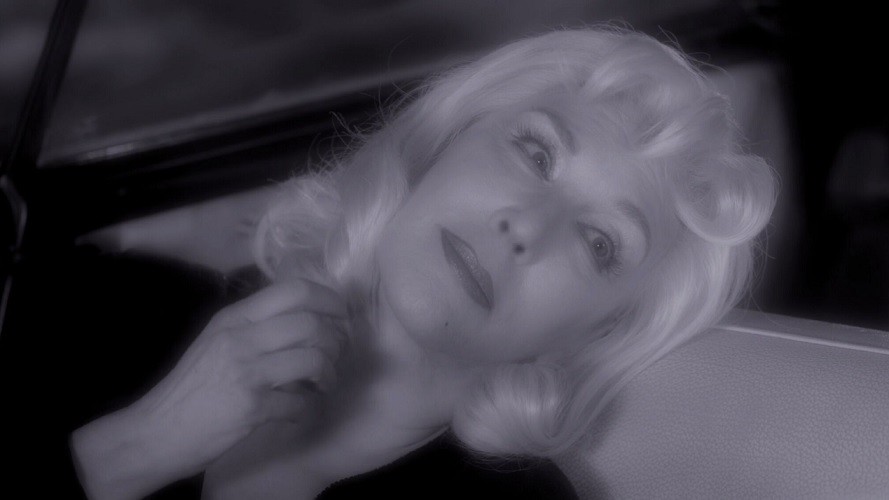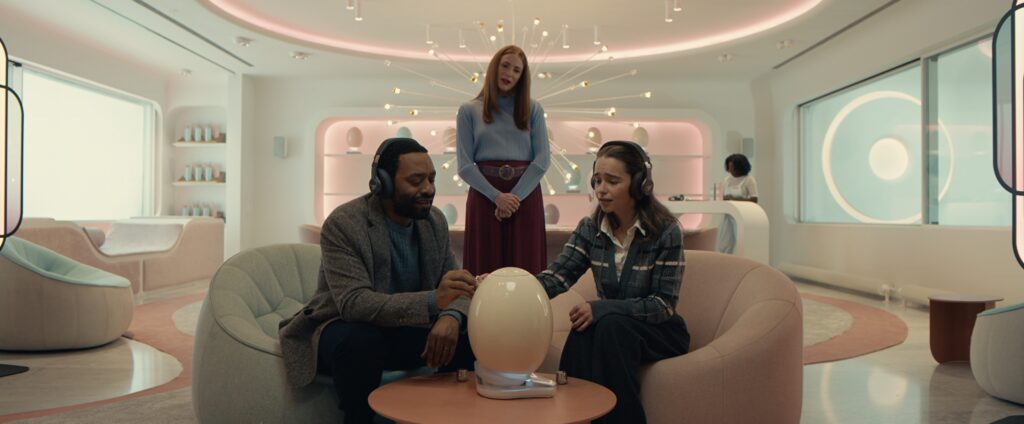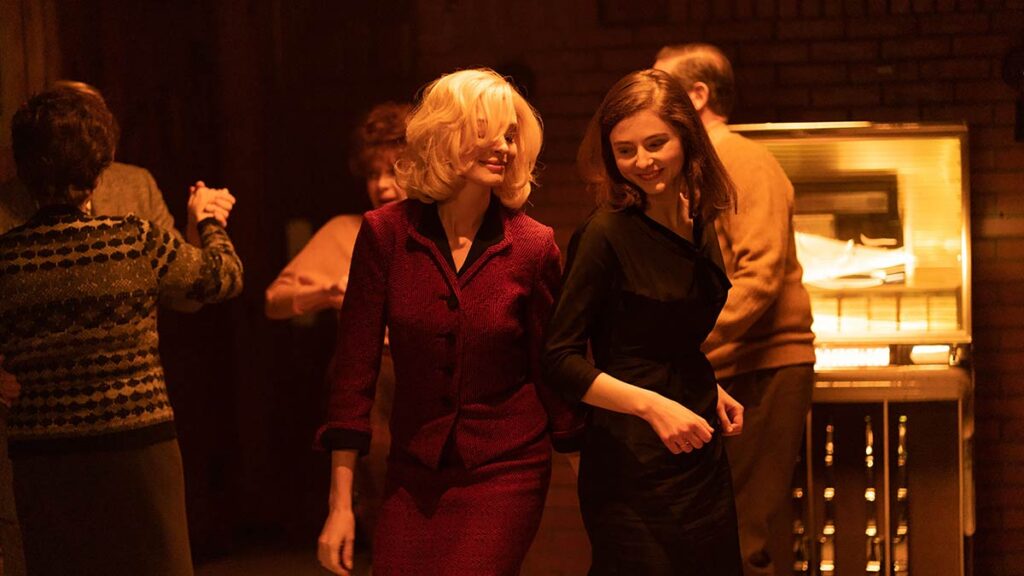Laurie Simmons is an internationally recognized artist. Her work is included in the collections of the Brooklyn Museum, the Museum of Modern Art, the Guggenheim Museum, and the Whitney Museum, among others. In 2006 she wrote and directed a short film, “The Music of Regret,” starring Meryl Streep.
“My Art” will premiere at the 2017 Tribeca Film Festival on April 22.
W&H: Describe the film for us in your own words.
LS: “My Art” is a kind of coming-of-age story focusing on Ellie Shine, a single woman and artist with a more than decent life which includes a teaching job, friends, and a dog. Ellie longs to push the boundaries of her artwork — as opposed to her “career” — and sets out to challenge herself in new ways.
She leaves New York to house-sit the home and studio of a more successful artist friend. Uncomfortable at first with inhabiting the space of another artist, she ultimately figures out how to incorporate her friend’s barn, clothes, cars, objects, and even some of the locals to help her move her work to a new place. She meets some curiously engaging new friends who also seem to be questioning the direction of their lives, but Ellie’s path and somewhat bittersweet happy ending are uniquely hers and hers alone.
W&H: What drew you to this story?
LS: I’ve spent a lot of time observing both portrayals of artists and representations of women my age on-screen and feel that both often fall short of what I feel to be accurate and true to the life I’ve experienced. I’d thought long and hard about women’s stories — particularly women over 40.
Do the stories ever move beyond the subjects of love and a rumination on aging? Are women’s aspirations ever really addressed apart from finding romance and a story book ending? And, lastly, what about the ageless aspects of a female character — those traits which might make her appealing, cinematically, to people of all ages?
I’d imagined the character of Ellie for a long time and at a certain point I would say she started telling me her story. I also felt compelled to give an honest picture of how an artist might work in her studio — a story devoid of the kind of caricature and melodrama often assigned to the character of “the artist.”
W&H: What do you want people to think about when they are leaving the theater?
LS: I’d like people to feel like they’ve just visited a place that’s very private, very green, and that something happened, something changed — not necessarily something huge, but something that reshaped the course of someone’s ordinary life.
I’ve always loved all the incarnations of Shakespeare’s “A Midsummer Night’s Dream” from Ingmar Bergman’s “Smiles of a Summer Night” and Stephen Sondheim’s “A Little Night Music” to Woody Allen’s “A Midsummer Night’s Sex Comedy.”
The summer farce with its implication of “the moon made me do crazy things” has always appealed to me along with the romance movies of the French New Wave like “Jules and Jim.” There’s a sense that these movies have both transported you and held you hostage in someone else’s life. I’d like people to feel that they’ve gotten to know Ellie, Frank, and John, and maybe to feel a little bit disappointed that they won’t get to find out what happens next.
W&H: What was the biggest challenge in making the film?
LS: Ha. The biggest challenge in making the film was making the film — every aspect of it, from the first outline to the first screening at the Venice Film Festival. I’m not sure I actually believed I would see it up on a screen. Making it was that much of a fantasy for me.
W&H: How did you get your film funded? Share some insights into how you got the film made.
LS: I would say somewhere in between crowdsourcing and private funding is my answer, but I’m still shocked by how many doors I had to knock on to try and find financing for “My Art.” I assumed it would be a far easier task than it turned out to be. I think when a director is in the throes of raising funds for a movie there is very little one won’t do or sell to make it happen — dogs and children included.
W&H: What does it mean for you to have your film play at Tribeca?
LS: Tribeca is a film festival that literally sprung from the ashes of 9/11, a national tragedy that occurred at our doorstep in downtown New York. I remember the first year of the festival so clearly — the mood was grim. I made one of the first artist trophies that were originally given as prizes to filmmakers at the fest.
In some sense “My Art” is about New York and about making it in New York. New York is where I made my work and came of age. I adore the city and am the consummate New Yorker.
I understand filmmakers who make the claim that their film is a love letter to the city. I initially thought I would make that movie but in “My Art” New York is always hovering just outside the frame.
What I truly know from experience is how challenging it is to live in New York and more specifically how difficult it is to find your destiny here. Every New Yorker readily admits they have a very passionate but fraught love affair with the city.
Showing my film to a New York audience is really my dream.
W&H: What’s the best and worst advice you’ve received?
LS: The best advice I received came from Ed Lachman, who shot my first film, a short called “The Music of Regret.” He told me to be democratic and diplomatic on set — to listen to what everyone has to say and then do what you want.
The worst advice I’ve received? Oh my God, [I’ve been given a lot of bad advice.]
W&H: What advice do you have for other female directors?
LS: I’ll offer the same advice I’ve given my art students all these years: Find your subject. Tell your story. If it’s true to you, it will find it’s way into the world.
I’m new to the film world but I imagine there are many of the same challenges that exist in the art world. We have to get our numbers up — we need more women in the front line.
W&H: Name your favorite woman-directed film and why.
LS: I love “The Hitchhiker,” which was directed by Ida Lupino and made her the first women to direct a film noir. It was a true thriller with an all-male cast. Lupino was really the first indie woman director.
She became a skilled low-budget filmmaker who pulled from her own wardrobe for costumes, reused sets from other movies, cast real people in roles, and used product placement with Coke and Cadillacs. She shot in public places to avoid location costs and did as much as possible in preproduction to avoid multiple retakes. I love the stories about how resourceful she was and how she loved to be considered a “mother” on set and a “bulldozer” when it came to getting money.
My close second would be Elaine May’s “A New Leaf,” followed by Andrea Arnold’s “Fish Tank.”
W&H: There have been significant conversations over the last couple of years about increasing the amount of opportunities for women directors yet the numbers have not increased. Are you optimistic about the possibilities for change? Share any thoughts you might have on this topic.
LS: I can only base my ideas on what I know from my own [visual arts] community where there are similar discussions. Years ago people started raising the issue of percentages of women represented in both museums and commercial gallery spaces. There was a flurry of activity and a number of “all-women” exhibitions but when the dust settled there was no real viable change, so the conversation started again.
I feel things are moving in a more positive direction. Maybe both having a female presidential candidate, and one of the largest U.S. protests (by women!) in history is finally ripping the band aid off the surprisingly blatant sexism that exists in our country. I have confidence that this particular glacier is beginning to melt but we need to be vigilant and make ourselves heard and not be afraid to address so-called feminine topics and the accompanying biases.







